Description
Implementing a Clean-in-Place (CIP) system is essential in various industries, especially in food and beverage, pharmaceuticals, and other manufacturing sectors where maintaining hygiene and cleanliness is crucial. Also, a CIP system is used to clean the interior surfaces of pipes, vessels, equipment, filters, and other process parts without disassembling them. Furthermore, this process helps in removing product residues, microorganisms, and other contaminants effectively, ensuring the equipment is clean and ready for the next production cycle.
A typical CIP system consists of various components that work together to facilitate the cleaning process. Moreover, these components include chemical storage tanks, pumps, heat exchangers, sensors, valves, instrumentations, and a control system. Finally, the CIP process involves several steps to ensure thorough cleaning and disinfection.
Let’s delve into the details of each component and the overall process of a CIP system:
Chemical Storage Tanks: CIP systems require different types of cleaning agents, sanitizers, and water for the cleaning process. In addition, chemical storage tanks are used to store these cleaning solutions before they are pumped into the system for cleaning. Also, these tanks are typically made of stainless steel and are equipped with level sensors to monitor the quantity of chemicals.
Pumps: Pumps are used to circulate the cleaning solutions through the system at a high velocity, ensuring that all internal surfaces are effectively cleaned. High-pressure pumps are commonly used in CIP systems to provide the necessary force for cleaning.
Heat Exchangers: Some CIP systems incorporate heat exchangers to heat the cleaning solutions to a specific temperature for optimum cleaning efficiency. Heat plays a crucial role in breaking down tough residues and killing bacteria during the cleaning process.
Sensors: Sensors are installed throughout the CIP system to monitor parameters such as temperature, pressure, flow rate, and chemical concentration. These sensors provide real-time data to the control system, allowing adjustments to be made for optimal cleaning performance.
Valves: Valves are essential components in a CIP system as they control the flow of cleaning solutions, water, and steam throughout the system. Automated valves enable precise control over the cleaning process and help in directing the flow to different sections of the equipment.
Instrumentation: Instrumentation such as flow meters, pressure gauges, and temperature indicators are used to monitor the conditions within the CIP system. This data is crucial in ensuring that the cleaning process is carried out effectively and efficiently.
Control System: The control system is the brain of the CIP system, coordinating the operation of various components to ensure proper cleaning. It allows operators to set cleaning parameters, monitor progress, and receive alerts in case of any issues during the cleaning process.
The CIP process itself typically follows a series of steps to ensure thorough cleaning and disinfection.
These steps may include:
Pre-Rinse: Water is circulated through the system to remove large particles and preliminary contaminants before the actual cleaning process begins.
Cleaning: The appropriate cleaning solution is prepared and circulated through the system at a specified temperature and flow rate. This step is crucial for removing product residues, grease, and other contaminants from the internal surfaces of the equipment.
Rinsing: After the cleaning phase, the system is rinsed thoroughly with water to remove any remaining cleaning agents and residues.
Sanitization: A sanitizing solution is circulated through the system to disinfect the equipment and eliminate any remaining bacteria or microorganisms.
Final Rinse: The system is given a final rinse with clean water to ensure that all traces of cleaning and sanitizing agents are removed, leaving the equipment clean and ready for the next production cycle.
Well Designed CIP System
Overall, a well-designed CIP system is essential for maintaining high standards of hygiene, ensuring product quality, and prolonging the lifespan of equipment in various industries. By incorporating the right components, following proper procedures, and utilizing automation and control systems, businesses can streamline their cleaning processes and meet stringent regulatory requirements for cleanliness and sanitation.
Our CIP System or sometimes referred to as a Clean-in-place (CIP) is a method of cleaning the interior surfaces of pipes, vessels, process equipment, filters and associated fittings, without disassembly.
Up to the 1950s, closed systems were disassembled and cleaned manually. The advent of our CIP System was a boon to industries that needed frequent internal cleaning of their processes. Industries that rely heavily on our CIP System are those requiring high levels of hygiene, and include: dairy, beverage, brewing, processed foods, pharmaceutical, and cosmetics.
History
The benefit to industries that use our CIP System is that the cleaning is faster, less labor-intensive and more repeatable, and poses less of a chemical exposure risk. Our CIP System started as a manual practice involving a balance tank, centrifugal pump, and connection to the system being cleaned. Since the 1950s, CIP has evolved to include fully automated systems with programmable logic controllers. It also has multiple balance tanks, sensors, valves, heat exchangers, data acquisition and specially designed spray nozzle systems. Simple, manually operated our CIP System are in use today.
The U.S. Food and Drug Administration published a CIP regulation in 1978 applicable to pharmaceutical manufacturing. Also, the regulation states, “Equipment and utensils shall be cleaned, maintained, and sanitized at appropriate intervals. This helps prevent malfunctions or contamination that would alter the safety, identity, strength, quality or purity of the drug product beyond the official or other established requirements.”
Depending on soil load and process geometry, the our CIP System design principle is one of the following:
- Deliver highly turbulent, high flow-rate solution to effect good cleaning (applies to pipe circuits and some filled equipment).
- Deliver solution as a low-energy spray to fully wet the surface (applies to lightly soiled vessels where a static spray ball may be used).
- Deliver a high energy impinging spray (applies to highly soiled or large diameter vessels where a dynamic spray device may be used).
Elevated temperature and chemical detergents are often employed to enhance cleaning effectiveness.
Bioreactors, fermenters, and mix vessels
Our CIP is commonly used for cleaning bioreactors, fermenters, mix vessels, and other equipment used in biotech manufacturing, pharmaceutical manufacturing and food and beverage manufacturing. Our CIP System is performed to remove or obliterate previous cell culture batch components. It is used to remove in-process residues and control bioburden. It will also reduce endotoxin levels within processing equipment and systems. Residue removal is accomplished during our CIP with a combination of heat, chemical action, and turbulent flow.
Repeatable, reliable, and effective cleaning is of the utmost importance in a manufacturing facility. In addition, cleaning procedures are validated to demonstrate that they are effective, reproducible, and under control. Moreover, in order to adequately clean processing equipment, the equipment must be designed with smooth stainless steel surfaces and interconnecting piping that has cleanable joints. Finally, the chemical properties of the cleaning agents must properly interact with the chemical and physical properties of the residues being removed.
Critical parameters must be met and remain within the specification for the duration of the cycle. Also, if the specification is not reached or maintained, cleaning will not be ensured and will have to be repeated. Finally, critical parameters include temperature, flow rate/supply pressure, chemical concentration, chemical contact time, and final rinse conductivity (which shows that all cleaning chemicals have been removed).
Specifications
Advantages / Disadvantages
Advantages:
Time and Cost Efficiency:
Advantage: CIP systems save time and labor costs by automating the cleaning process, reducing downtime between production cycles.
Advantage: Eliminates the need for disassembly and manual cleaning, streamlining operations and increasing overall efficiency.
Consistent Cleaning Results:
Advantage: CIP systems ensure uniform and thorough cleaning of equipment, maintaining hygiene standards and reducing the risk of product contamination.
Advantage: Automated processes deliver consistent cleaning results compared to manual cleaning methods, minimizing human error.
Improved Hygiene and Safety:
Advantage: CIP systems help maintain a hygienic environment by effectively removing residues, biofilms, and microorganisms from equipment surfaces.
Advantage: Enhances worker safety by reducing exposure to potentially hazardous cleaning chemicals and minimizing manual handling of cleaning tasks.
Compliance and Quality Assurance:
Advantage: CIP systems aid in meeting regulatory requirements and industry standards for cleanliness and sanitation.
Advantage: Facilitates traceability and documentation of cleaning processes, ensuring quality assurance and product integrity.
Equipment Longevity:
Advantage: Proper and regular cleaning with CIP systems extends the lifespan of equipment by preventing corrosion, buildup, and damage caused by contaminants.
Advantage: Reduces maintenance costs and improves operational reliability by keeping equipment in optimal condition.
Disadvantages:
Initial Investment:
Disadvantage: Installing a CIP system can involve a significant upfront investment in equipment, installation, and setup.
Disadvantage: Cost considerations may deter smaller businesses from implementing CIP systems, especially if manual cleaning methods are currently in use.
Complexity and Maintenance:
Disadvantage: CIP systems can be complex to design, operate, and maintain, requiring specialized knowledge and training.
Disadvantage: Regular maintenance, calibration of equipment, and monitoring of cleaning parameters are essential to ensure the system functions optimally.
Resource Consumption:
Disadvantage: CIP systems consume water, energy, and cleaning chemicals, contributing to operational costs and environmental impact.
Disadvantage: Optimizing resource usage and efficiency is crucial to minimize waste and reduce the system’s carbon footprint.
Limited Flexibility:
Disadvantage: CIP systems may have limitations in cleaning certain types of equipment or intricate components that require manual intervention.
Disadvantage: Customizing CIP processes for specialized applications or adapting to changing cleaning requirements can be challenging.
Risk of Contamination:
Disadvantage: Improper maintenance or oversight in CIP system operation can lead to inadequate cleaning, potentially resulting in contamination and compromising product quality.
Disadvantage: Monitoring system performance, conducting validation tests, and addressing maintenance issues promptly are essential to mitigate the risk of contamination.
In conclusion, while Clean-in-Place (CIP) systems offer numerous advantages in terms of efficiency, hygiene, and compliance, they also come with certain challenges related to initial costs, complexity, resource consumption, flexibility, and maintenance requirements. By carefully assessing the pros and cons and implementing best practices, businesses can leverage the benefits of CIP systems while addressing potential drawbacks effectively.
Q&A
Q: What is a Clean-in-Place (CIP) system?
A: A Clean-in-Place (CIP) system is a cleaning method used in various industries to clean the interior surfaces of pipes, vessels, and equipment without the need for disassembly.
Q: Why is a CIP system important?
A: A CIP system is essential for maintaining hygiene, preventing contamination, and ensuring the cleanliness of equipment used in industries such as food and beverage, pharmaceuticals, and manufacturing.
Q: What are the key components of a CIP system?
A: The key components of a CIP system include chemical storage tanks, pumps, heat exchangers, sensors, valves, instrumentation, and a control system.
Q: How does a CIP system work?
A: A CIP system works by circulating cleaning solutions through the system at high pressures and temperatures to remove product residues, microorganisms, and contaminants from internal surfaces effectively.
Q: What are the steps involved in a typical CIP process?
A: The typical steps in a CIP process include pre-rinsing, cleaning with a suitable solution, rinsing, sanitizing, and a final rinse to ensure thorough cleaning and disinfection.
Q: What are the advantages of using a CIP system?
A: Some advantages of using a CIP system include reduced downtime for cleaning, improved efficiency, consistent cleaning results, and compliance with hygiene and safety regulations.
Q: How can automation enhance a CIP system?
A: Automation can enhance a CIP system by enabling precise control over cleaning parameters, real-time monitoring of processes, and automated alerts for maintenance and issues, resulting in optimized cleaning performance.
Q: What industries benefit from implementing CIP systems?
A: Industries such as food and beverage processing, pharmaceutical manufacturing, dairy production, and biotechnology benefit greatly from implementing CIP systems to maintain cleanliness and quality standards.
Q: How can operators ensure the effectiveness of a CIP system?
A: Operators can ensure the effectiveness of a CIP system by following proper cleaning procedures, monitoring parameters closely, regularly maintaining system components, and conducting validation tests to verify cleaning efficacy.
Applications
Clean-in-Place (CIP) systems find widespread applications in various industries where maintaining cleanliness, hygiene, and operational efficiency are paramount. Here are detailed descriptions of CIP system applications in different sectors:
Food and Beverage Industry:
Breweries: CIP systems are extensively used in breweries to clean fermentation tanks, piping, and other equipment to prevent cross-contamination, ensure product quality, and maintain consistency in flavor profiles.
Dairies: In dairy processing, CIP systems clean milk storage tanks, milk lines, pasteurization equipment, and filling machines to eliminate bacteria, biofilms, and milk residues, ensuring hygienic standards are met.
Bottling Plants: CIP systems are vital for cleaning bottling lines, filling machines, and storage tanks in beverage bottling plants. The automated process helps maintain cleanliness and prevent contamination during production.
Pharmaceutical Industry:
Drug Manufacturing: CIP systems play a critical role in cleaning equipment used in drug manufacturing processes, such as reactors, mixers, and storage vessels, ensuring compliance with strict regulatory requirements and maintaining product integrity.
Biotechnology: In biopharmaceutical production, CIP systems clean bioreactors, chromatography columns, and filtration equipment to prevent microbial growth, protein denaturation, and cross-contamination, safeguarding product purity and efficacy.
Cosmetics and Personal Care Industry:
Cosmetics Manufacturing: CIP systems are utilized to clean processing equipment in cosmetics manufacturing, including mixing vessels, pumps, and filling lines, ensuring product safety, consistency, and quality.
Personal Care Products: CIP systems help maintain cleanliness in the production of personal care items like shampoos, lotions, and creams by cleaning mixing tanks, pipelines, and packaging machinery, reducing the risk of contamination and improving efficiency.
Chemical Industry:
Specialty Chemicals: CIP systems are employed in the production of specialty chemicals to clean reaction vessels, distillation columns, and pipelines, ensuring product purity, preventing contamination, and minimizing downtime between batches.
Agrochemicals: In agrochemical manufacturing, CIP systems clean equipment used in pesticide and fertilizer production, such as spray dryers, agitators, and storage tanks, maintaining operational hygiene and preventing the mixing of different formulations.
Water Treatment and Utilities:
Water Treatment Plants: CIP systems clean filtration units, membrane systems, and disinfection equipment in water treatment plants to remove biological fouling, scale deposits, and contaminants, ensuring the delivery of clean and safe drinking water.
Wastewater Treatment: CIP systems are used to clean aeration tanks, settling basins, and sludge dewatering equipment in wastewater treatment facilities, helping to maintain operational efficiency and regulatory compliance.
In summary, Clean-in-Place (CIP) systems have diverse applications across industries, from ensuring product quality and safety in food and pharmaceutical manufacturing to maintaining process efficiency and compliance with industry regulations. By automating the cleaning process and optimizing hygiene practices, CIP systems contribute significantly to enhancing operational standards and minimizing the risk of contamination in various industrial sectors.
Downloads

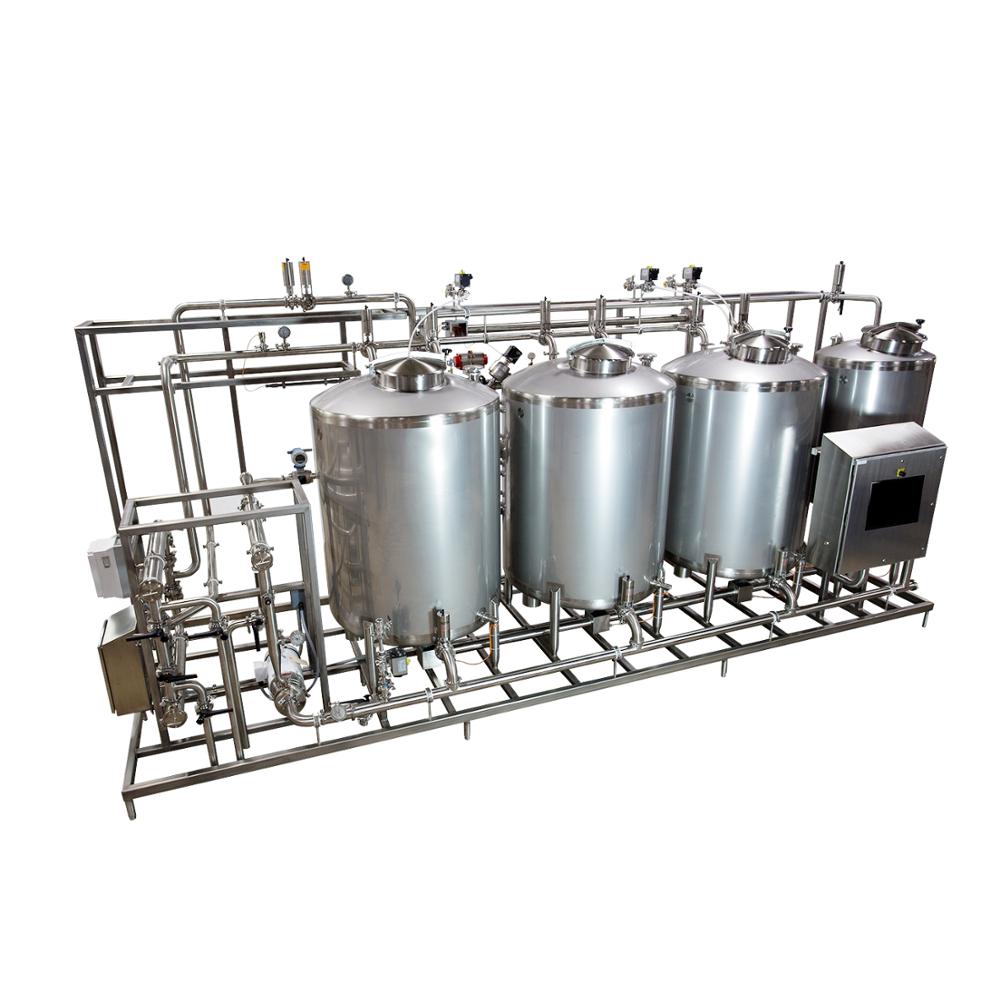
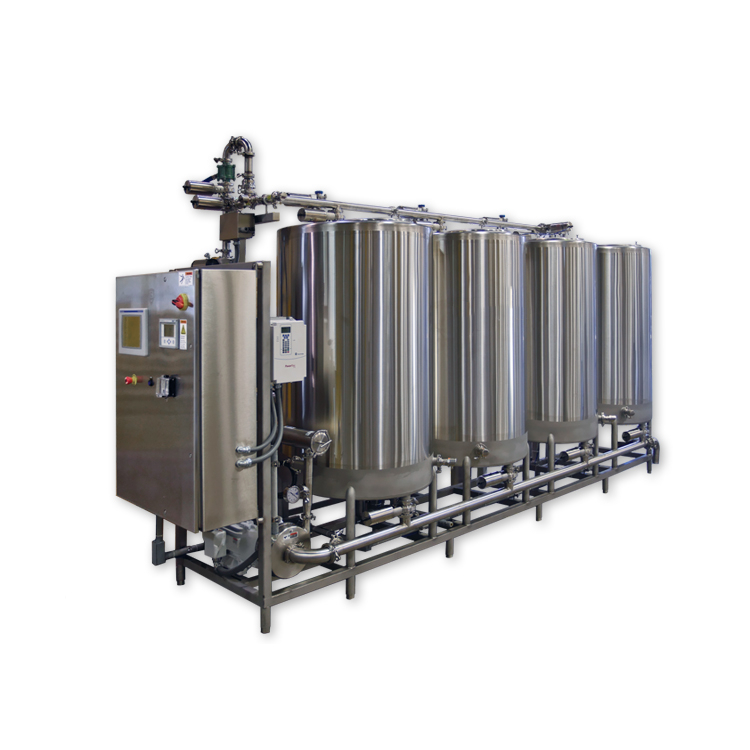
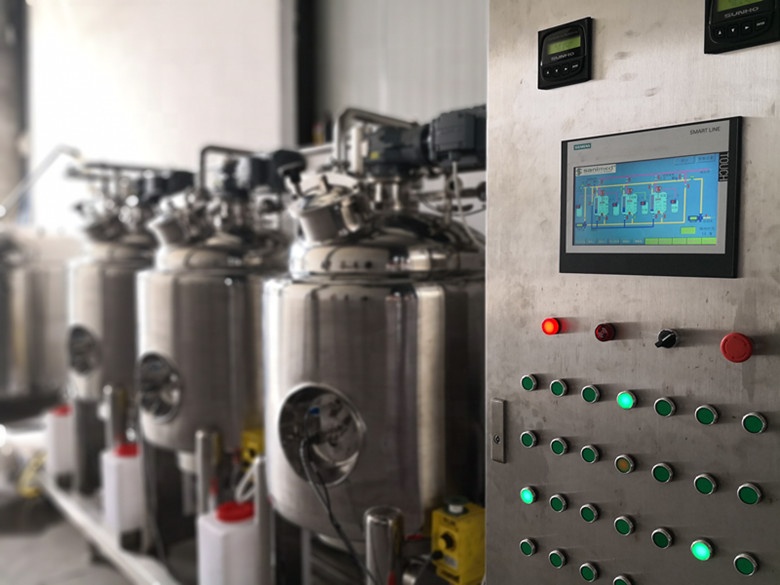
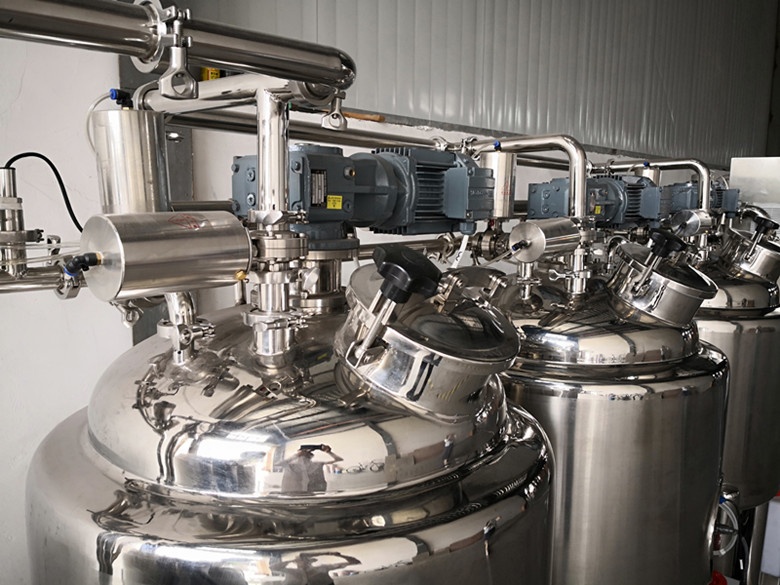
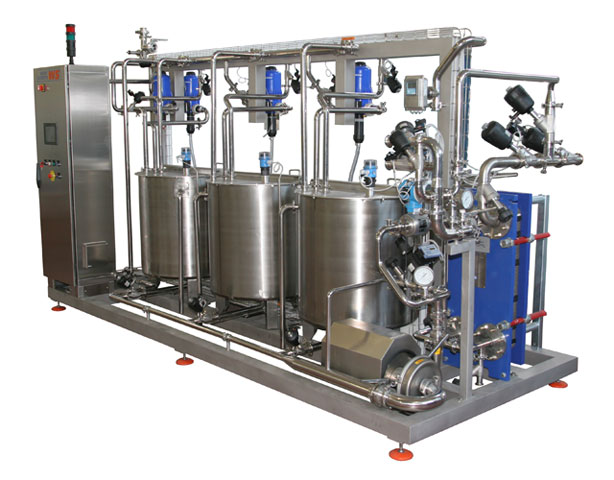
Reviews
There are no reviews yet.